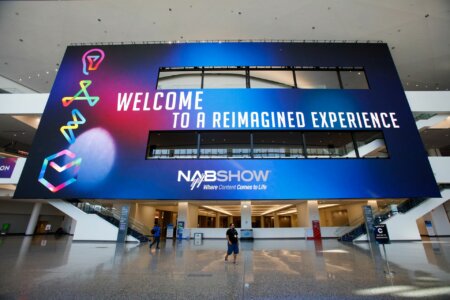I bring good news to all! The FCC has recently issued an order stating that baby video monitors are exempt from having to decode closed captions! Phew, that is going to make all the difference in the world for the media industry:
As you will know if you are an avid reader of this blog, the FCC in the US has set down a ruling that extends the mandate for captioning content. Not only does television have to be captioned but, since September 30th last year, if you take that television content and put it online, then it too has to be captioned.
Clarifications of the Original FCC Order on Captions
Last month, the FCC released what it calls an “order on reconsideration and further notice of proposed rulemaking” (FNPRM), which clarifies some of the original order (including the status of baby monitors), and also sets in train future consultations.
Before looking at the latest thinking, let me take a moment to remind us all of what we are talking about here. The fundamental purpose of closed captioning is to make television programming accessible to those whose hearing is impaired.
To me, it makes perfect sense that the accessibility of the content should not be dependent on the platform the consumer chooses to use. Why should you get subtitles if you watch through a set-top box but not if you watch through an Apple TV or an Xbox connected to the same television screen?
The same logic, surely, applies to the question of video clips, which is the main driver for this FNPRM. The requirement for ubiquitous captioning applies only to “full-length programming”, but not to clips from the same content. So if you are hearing impaired, you cannot watch a news story online but instead have to wait until ten o’clock to see the whole newscast?
The Saga Continues
What the FCC is now saying is that there will be a further six months’ consultation to see if the industry “voluntarily will caption an increased volume of video clips, particularly news clips” before it will consider making it mandatory. So this story will run and run.
I get a bit worked up by this continuing saga because it seems that a lot of people are dragging their feet on something that is socially important and, given modern broadcast infrastructures and workflows, really not that hard to do. Yes, in the old days of linear workflows, captioning was the last thing that tended to get done, with a VHS dub of the final cut sent out to a specialist facility who sent back a single subtitle file locked to timecode.
Harness the Power of Technology
This is a classic example of our failure to seize the real advantages of modern technology. We should not be replacing the hardware but processing the tasks the way we used to. With file-based infrastructures we can work collaboratively, we can compress timescales, we can carry out tasks in parallel.
And most importantly, we can handle our content as files, not as single, linear stretches of audio and video. Put the subtitles in the file so each caption is, effectively, an event. Edit the pictures and sound and you automatically edit the captions too. Creating a captioned clip should take no more effort, time or money than creating a non-captioned clip.
Packaging that clip for any number of different platforms will also keep the captions locked with it, so everyone gets the benefit.
And, as I said, the good news is that baby monitors – and digital photo frames – are now specifically exempt from the captioning requirement because they are designed to play only user-generated content. So all is right with the world.
Featured in: Captioning | File-Based Workflows | Industry Insights |
With 30 years in the industry, Bruce looks after Media Technology for Dalet. An engineer who designed antennas, ASICs, software, algorithms, systems and standards, Bruce is best known for being @MrMXF and you can get his book on Amazon.
More Articles By Bruce



